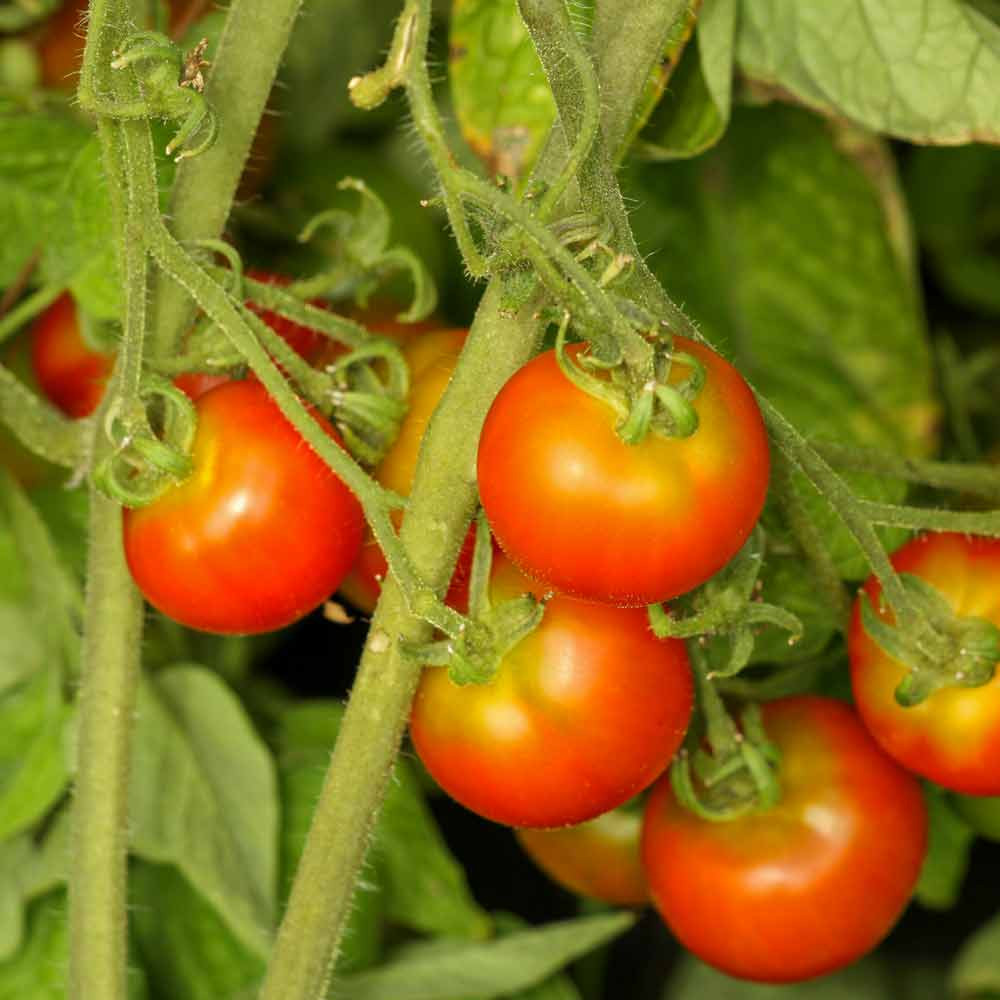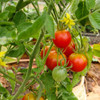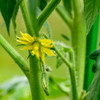Stupice Tomato Seeds - (Lycopersicon lycopersicum)
- SKU:
- V1325
- Seed Count:
- Approx 25 seeds per pack
- Days to Maturity:
- 52-85 days
- Type:
- Indeterminate
- Size:
- Plum
- Color:
- Red
- Leaf:
- Potato
- Days to Germination:
- 5-7 days @ 75-95F
- Light Preference:
- Full sun
- Plant Spacing:
- 12"
- Status:
- Heirloom, Non-Hybrid, Non-GMO seeds
Description
Stupice Tomato - Early, Cold-Hardy, and Exceptionally Flavorful
This tomato has graced gardens in Eastern Europe for generations, weathering changing times and political landscapes, earning its place in the kitchen. The Stupice tomato, pronounced "stoo-PEACH-ka," dates back to the mid-20th century, with a history as rich and complex as its flavor. Bred just outside of Prague, it quickly earned a reputation for its early ripening, cold hardiness, and exceptional flavor – the perfect balance of sweetness and tang, just like the old-fashioned tomatoes from grandma's garden. It's a favorite among home gardeners for these very reasons: early ripening, cold tolerance, prolific yields, and that rich flavor that only improves as the season progresses.
This Czech heirloom variety produces abundant clusters of small, bright red fruits that are juicy, sweet, and tangy. Also known as Stupické Polní Rané (Czech for "Stupice Field Early"), it was bred to thrive in cooler climates, making it well-suited for the short growing seasons and variable weather conditions of Eastern Europe. Today, it continues to be a cherished favorite among home gardeners and chefs across the country.
Details
The Stupice tomato has an indeterminate (vining) growth habit, meaning it will continue to grow and produce fruit throughout the season. These vining plants grow long and wild and require a support system, such as a stake, trellis, or cage. With proper support, this variety typically reaches around 4 feet in height, though it can grow taller. It is suitable for USDA Hardiness Zones 3-11.
The Stupice tomato's adaptability shines through in its ability to thrive in diverse climates. Its fast growth and early ripening allow it to excel in cool seasons, producing a bountiful harvest even when other varieties struggle. However, this same rapid growth also makes it surprisingly well-suited to hot climates, where it can quickly set fruit before the worst of the summer heat arrives, a characteristic confirmed by the success southwestern gardeners have enjoyed with this versatile variety.
Fruits are small to medium-sized (2-3 inches in diameter), round with a slightly flattened shape, and ripen to a rich, vibrant red. Biting into a Stupice tomato is like taking a trip back in time. The flavor is a delightful balance of sweetness and tang, with a load of that classic, old-fashioned tomato flavor that's hard to find in modern hybrids. It's juicy and refreshing, with just the right touch of acidity that keeps you coming back for more. It is one of the earliest ripening tomatoes.
The leaves of the Stupice tomato are the "potato leaf" type, larger and broader than the more common regular leaf type. This distinctive foliage adds a unique and almost tropical texture to the tomato patch, setting it apart from other varieties. The bright red, slightly flattened fruits practically glow against the deep green foliage, offering a vibrant pop of color to the garden.
Stupice tomatoes are known for their early maturity, with fruits ripening in as little as 55 to 65 days. Days to maturity can vary, but it is a reliable choice for an early tomato, making it an excellent option for gardeners in short-season areas or those wanting to enjoy fresh tomatoes as soon as possible. This makes it a popular choice for gardeners in cooler climates, and it's one of the earliest tomatoes to produce in such conditions. Even in cool springs, Stupice sets fruit reliably, extending the harvest season, and it continues to produce into late fall, setting fruit until stopped by frost. Stupice tomatoes thrive in full sun, requiring at least 6 hours of direct sunlight daily for optimal growth and fruit production. They prefer well-drained clay or loam soil and are drought tolerant; however, consistent watering is crucial for good yields and to prevent blossom-end rot. The bright yellow flowers attract a variety of pollinators, including bees and butterflies.
History
The Stupice tomato variety was developed in the mid-1950s at an agricultural station in the town of Stupice, near Prague, in the former Czechoslovakia. The variety was developed by Jaroslav Homola, a renowned Czech tomato breeder, from a cross of Mikado x Sláva Porýni x Solanum racemigerum, also known as the currant tomato, a wild tomato species native to Ecuador and Peru. It is a close relative of the domesticated tomato and is often used in breeding programs to introduce desirable traits, such as disease resistance. One of the parent varieties of Stupice, Sláva Porýni, is a potato leaf variety from the Czech Republic. The name translates to "Glory of the Rhine". It is an indeterminate variety that produces abundant quantities of 2-inch, red, round tomatoes with delicious, tomatoey flavors.
Stupice was introduced to North America in 1977 by the Abundant Life Seed Foundation. According to the founder of the Abundant Life Seed Foundation, Forest Shomer of Port Townsend, Milan Sodomka sent him some seeds in March 1976, including Stupice. It quickly gained popularity among gardeners and was listed in the Seed Savers Exchange yearbook by 1986. Today, it remains a highly sought-after heirloom variety.
In the 1990s, Stupice became a favorite in university extension trials (e.g., University of Alaska Fairbanks) for its cold tolerance. It outperformed many hybrids in cool-summer regions, earning endorsements from master gardeners. Chef and gardening advocates, including Barbara Damrosch and Eliot Coleman, highlighted its flavor in publications, cementing its status in the “locavore” movement.
Uses
Stupice tomatoes are incredibly versatile in the kitchen. Their typical size is 2-3 inches and 2-4 ounces, and their sweet, tangy flavor makes them perfect for salads, sandwiches, and snacks. They can also be used for sauces, salsas, and canning. Their early ripening makes them a particularly welcome addition to the table for those eager to taste their first fresh tomato of the season.
One of the simplest and most delicious ways to enjoy Stupice tomatoes is to make a tomato salad. Simply cut the tomatoes into chunks, sprinkle them with salt and a drizzle of olive oil, and let them sit for about 20 minutes to allow the salt to draw out the juices.
When other tomato varieties start to ripen, Stupice tomatoes can be made into red sauces or roasted and preserved in olive oil for later use. Their small size also makes them ideal for drying. While delicious fresh, Stupice tomatoes have exceptional flavor when cooked or dried.
Companion Planting
Beneficial Companions include basil (repels flies, aphids, and tomato hornworms while improving flavor), marigolds (deter nematodes and other soil pests), onions (repel pests and improve growth), garlic (deters spider mites), and borage (attracts pollinators and beneficial insects).
Antagonistic Companions are dill (can inhibit tomato growth), brassicas (cabbage, broccoli, cauliflower – compete for nutrients and may increase disease risk), and potatoes (belong to the same family and may attract similar pests and diseases).
Harvest Tips
To ensure the best flavor from your Stupice tomatoes, harvest in the morning after the dew has dried but before the heat of the day. For optimal flavor, harvest tomatoes when they reach their full, deep red color and are slightly soft to the touch.
Cool temperatures can injure ripe tomatoes, and they must be stored at room temperature, never refrigerated, to avoid chilling injury, which leaves pockmarks or pits on the skin leading to early rotting.
If you need to harvest early due to weather or the end of the season, those fruits with a pink blush at the blossom end will ripen with almost full flavor. Those with the faint white lines can still ripen but won’t have the full flavor.
Learn More
- Growing Tomatoes 101
- Determinate and Indeterminate Tomatoes - What's the Difference?
- Heirloom Tomato Growing Tips
- Heirloom Tomato Leaves - Potato Leaf vs Regular Leaf
- Blossom End Rot - What To Do
- Fermented Tomato Conserve
- Sicilian Eggplant and Tomato Sauce
From the soil to the seed to the food you eat - we'll help you grow your best garden!

















